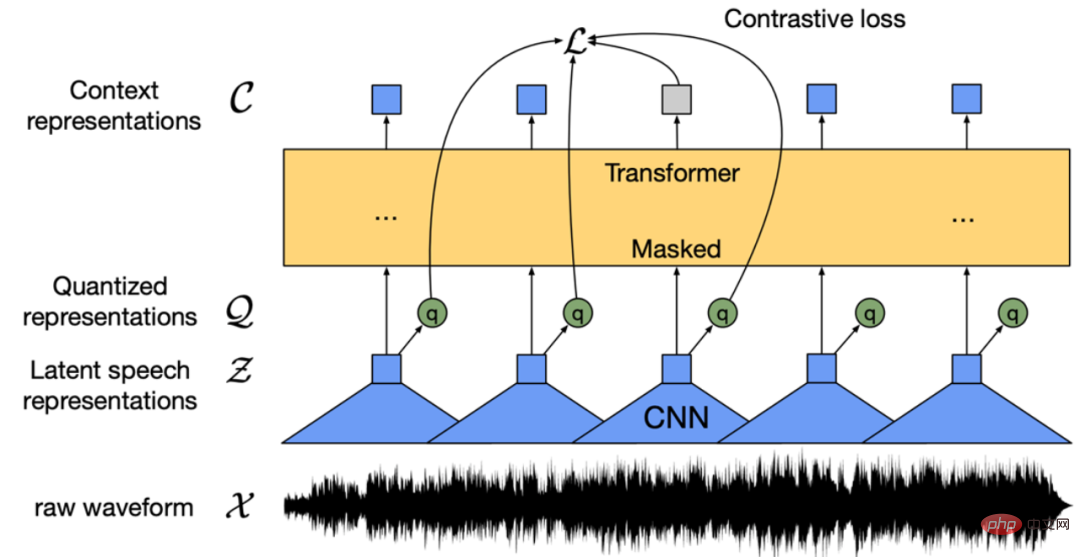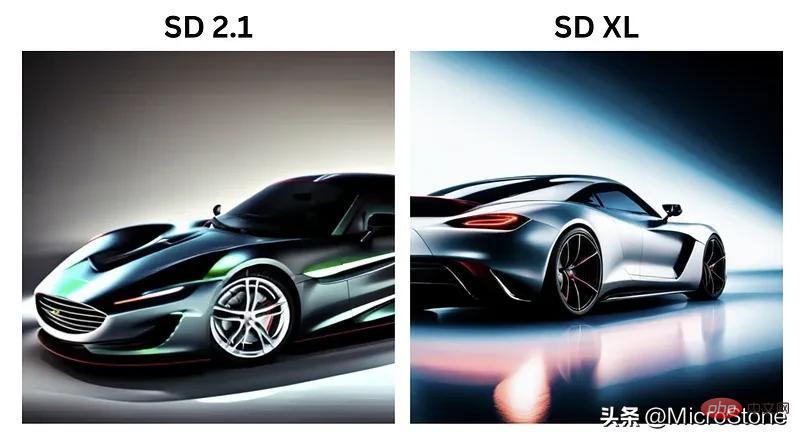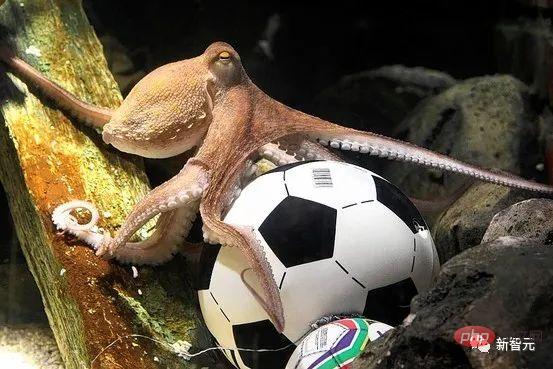 Technology peripherals
Technology peripherals AI
AI KAN, which replaces MLP, has been extended to convolution by open source projects
KAN, which replaces MLP, has been extended to convolution by open source projectsEarly this month, researchers from MIT and other institutions proposed a very promising alternative to MLP - KAN.
KAN outperforms MLP in terms of accuracy and interpretability. And it can outperform MLP running with a larger number of parameters with a very small number of parameters. For example, the authors stated that they used KAN to reproduce DeepMind's results with a smaller network and a higher degree of automation. Specifically, DeepMind's MLP has about 300,000 parameters, while KAN only has about 200 parameters.
KAN has the same strong mathematical foundation as MLP, which is based on the universal approximation theorem, while KAN is based on the Kolmogorov-Arnold representation theorem.
As shown in the figure below, KAN has activation functions on edges, while MLP has activation functions on nodes. KAN seems to be more parameter efficient than MLP, but each KAN layer has more parameters than MLP layers. picture: [Figure 1: Schematic diagram] Brief explanation: KAN is an edge-based neural network structure, and each node has an edge weight and activation function. It realizes the transmission and update of information through edge propagation. MLP is a node-based neural network structure, each node has an input Extended to convolutional neural networks, the classic linear transformation of convolution is changed to a learnable nonlinear activation function in each pixel, and KAN convolution (CKAN) is proposed and open sourced.

Project address: https://github.com/AntonioTepsich/Convolutional-KANs
 KAN Convolution
KAN Convolution
KAN Convolution is very similar to convolution, but instead of applying a dot product between a kernel and the corresponding pixel in the image, a learnable nonlinearity is applied to each element Activate the functions and then add them together. The kernel of the KAN convolution is equivalent to the KAN linear layer with 4 input and 1 output neurons. For each input i, applying the ϕ_i learnable function, the resulting pixel of this convolution step is the sum of ϕ_i (x_i).
Parameters in KAN convolution

Assume there is a KxK kernel , for each element of the matrix, there is a ϕ, whose parameter count is: gridsize 1, ϕ is defined as:
This is the activation Function b provides more expressibility, and the parameter count of the linear layer is gridsize 2. Therefore, KAN convolution has a total of K^2(gridsize 2) parameters, while ordinary convolution only has K^2.
 Initial evaluation
Initial evaluation
The different architectures tested by the author are:
Connection KAN convolutional layer (KKAN) to KAN linear layer
KAN convolutional layer (CKAN) connected to MLP
- In convolution CKAN (CKAN_BN) with batch normalization between
- ConvNet (classic convolution connected to MLP) (ConvNet)
- Simple MLP
- The author stated that the implementation of KAN convolution is a promising idea, although it is still in its early stages. They conducted some preliminary experiments to evaluate the performance of KAN convolutions.
 It is worth noting that the reason for publishing these "preliminary" results is because they hope to introduce this idea to the outside world as soon as possible and promote broader research in the community.
It is worth noting that the reason for publishing these "preliminary" results is because they hope to introduce this idea to the outside world as soon as possible and promote broader research in the community.
#Each element of the list in the convolutional layer contains the convolution number and the corresponding kernel size.
Based on the 28x28 MNIST dataset, it can be observed that the KANConv & MLP model achieves acceptable accuracy compared to ConvNet (large). However, the difference is that KANConv & MLP requires 7 times the number of parameters than standard ConvNet. Furthermore, KKAN’s accuracy is 0.04 lower than ConvNet Medium, while the number of parameters (94k vs. 157k) is almost half that of ConvNet Medium, which shows the potential of this architecture. We also need to conduct experiments on more data sets to draw conclusions on this.
In the coming days and weeks, the authors will also thoroughly tune the model and the hyperparameters of the models used for comparison. While some hyperparameter and architecture variations have been tried, this is only heuristic and does not follow any precise approach. They have not yet worked with large or more complex data sets due to computational power and time constraints, and are working on solving this problem.
In the future, the authors will conduct experiments on more complex data sets, which means that the parameter amount of KANS will increase because more KAN convolutional layers need to be implemented.
Conclusion
Currently, compared with traditional convolutional networks, the author stated that he has not seen a significant improvement in the performance of KAN convolutional networks. . Their analysis believes that this is due to the use of simple data sets and models. Compared with the best architecture tried (ConvNet Big, this comparison is unfair based on the scale factor), the advantage of this architecture is that it has good control over parameters. The requirements are much less.
Comparison between 2 identical convolutional layers and a KAN convolutional layer with the same MLP connected at the end shows that the classic method is slightly better, with an accuracy improvement of 0.06, The number of parameters of the KAN convolutional layer and KAN linear layer is almost half that of the classic method, but the accuracy is reduced by 0.04.
The authors stated that as the complexity of the model and data set increases, the performance of the KAN convolutional network should improve. At the same time, as the input dimension increases, the number of parameters of the model will also grow faster.
The above is the detailed content of KAN, which replaces MLP, has been extended to convolution by open source projects. For more information, please follow other related articles on the PHP Chinese website!
 从VAE到扩散模型:一文解读以文生图新范式Apr 08, 2023 pm 08:41 PM
从VAE到扩散模型:一文解读以文生图新范式Apr 08, 2023 pm 08:41 PM1 前言在发布DALL·E的15个月后,OpenAI在今年春天带了续作DALL·E 2,以其更加惊艳的效果和丰富的可玩性迅速占领了各大AI社区的头条。近年来,随着生成对抗网络(GAN)、变分自编码器(VAE)、扩散模型(Diffusion models)的出现,深度学习已向世人展现其强大的图像生成能力;加上GPT-3、BERT等NLP模型的成功,人类正逐步打破文本和图像的信息界限。在DALL·E 2中,只需输入简单的文本(prompt),它就可以生成多张1024*1024的高清图像。这些图像甚至
 找不到中文语音预训练模型?中文版 Wav2vec 2.0和HuBERT来了Apr 08, 2023 pm 06:21 PM
找不到中文语音预训练模型?中文版 Wav2vec 2.0和HuBERT来了Apr 08, 2023 pm 06:21 PMWav2vec 2.0 [1],HuBERT [2] 和 WavLM [3] 等语音预训练模型,通过在多达上万小时的无标注语音数据(如 Libri-light )上的自监督学习,显著提升了自动语音识别(Automatic Speech Recognition, ASR),语音合成(Text-to-speech, TTS)和语音转换(Voice Conversation,VC)等语音下游任务的性能。然而这些模型都没有公开的中文版本,不便于应用在中文语音研究场景。 WenetSpeech [4] 是
 普林斯顿陈丹琦:如何让「大模型」变小Apr 08, 2023 pm 04:01 PM
普林斯顿陈丹琦:如何让「大模型」变小Apr 08, 2023 pm 04:01 PM“Making large models smaller”这是很多语言模型研究人员的学术追求,针对大模型昂贵的环境和训练成本,陈丹琦在智源大会青源学术年会上做了题为“Making large models smaller”的特邀报告。报告中重点提及了基于记忆增强的TRIME算法和基于粗细粒度联合剪枝和逐层蒸馏的CofiPruning算法。前者能够在不改变模型结构的基础上兼顾语言模型困惑度和检索速度方面的优势;而后者可以在保证下游任务准确度的同时实现更快的处理速度,具有更小的模型结构。陈丹琦 普
 解锁CNN和Transformer正确结合方法,字节跳动提出有效的下一代视觉TransformerApr 09, 2023 pm 02:01 PM
解锁CNN和Transformer正确结合方法,字节跳动提出有效的下一代视觉TransformerApr 09, 2023 pm 02:01 PM由于复杂的注意力机制和模型设计,大多数现有的视觉 Transformer(ViT)在现实的工业部署场景中不能像卷积神经网络(CNN)那样高效地执行。这就带来了一个问题:视觉神经网络能否像 CNN 一样快速推断并像 ViT 一样强大?近期一些工作试图设计 CNN-Transformer 混合架构来解决这个问题,但这些工作的整体性能远不能令人满意。基于此,来自字节跳动的研究者提出了一种能在现实工业场景中有效部署的下一代视觉 Transformer——Next-ViT。从延迟 / 准确性权衡的角度看,
 Stable Diffusion XL 现已推出—有什么新功能,你知道吗?Apr 07, 2023 pm 11:21 PM
Stable Diffusion XL 现已推出—有什么新功能,你知道吗?Apr 07, 2023 pm 11:21 PM3月27号,Stability AI的创始人兼首席执行官Emad Mostaque在一条推文中宣布,Stable Diffusion XL 现已可用于公开测试。以下是一些事项:“XL”不是这个新的AI模型的官方名称。一旦发布稳定性AI公司的官方公告,名称将会更改。与先前版本相比,图像质量有所提高与先前版本相比,图像生成速度大大加快。示例图像让我们看看新旧AI模型在结果上的差异。Prompt: Luxury sports car with aerodynamic curves, shot in a
 五年后AI所需算力超100万倍!十二家机构联合发表88页长文:「智能计算」是解药Apr 09, 2023 pm 07:01 PM
五年后AI所需算力超100万倍!十二家机构联合发表88页长文:「智能计算」是解药Apr 09, 2023 pm 07:01 PM人工智能就是一个「拼财力」的行业,如果没有高性能计算设备,别说开发基础模型,就连微调模型都做不到。但如果只靠拼硬件,单靠当前计算性能的发展速度,迟早有一天无法满足日益膨胀的需求,所以还需要配套的软件来协调统筹计算能力,这时候就需要用到「智能计算」技术。最近,来自之江实验室、中国工程院、国防科技大学、浙江大学等多达十二个国内外研究机构共同发表了一篇论文,首次对智能计算领域进行了全面的调研,涵盖了理论基础、智能与计算的技术融合、重要应用、挑战和未来前景。论文链接:https://spj.scien
 什么是Transformer机器学习模型?Apr 08, 2023 pm 06:31 PM
什么是Transformer机器学习模型?Apr 08, 2023 pm 06:31 PM译者 | 李睿审校 | 孙淑娟近年来, Transformer 机器学习模型已经成为深度学习和深度神经网络技术进步的主要亮点之一。它主要用于自然语言处理中的高级应用。谷歌正在使用它来增强其搜索引擎结果。OpenAI 使用 Transformer 创建了著名的 GPT-2和 GPT-3模型。自从2017年首次亮相以来,Transformer 架构不断发展并扩展到多种不同的变体,从语言任务扩展到其他领域。它们已被用于时间序列预测。它们是 DeepMind 的蛋白质结构预测模型 AlphaFold
 AI模型告诉你,为啥巴西最可能在今年夺冠!曾精准预测前两届冠军Apr 09, 2023 pm 01:51 PM
AI模型告诉你,为啥巴西最可能在今年夺冠!曾精准预测前两届冠军Apr 09, 2023 pm 01:51 PM说起2010年南非世界杯的最大网红,一定非「章鱼保罗」莫属!这只位于德国海洋生物中心的神奇章鱼,不仅成功预测了德国队全部七场比赛的结果,还顺利地选出了最终的总冠军西班牙队。不幸的是,保罗已经永远地离开了我们,但它的「遗产」却在人们预测足球比赛结果的尝试中持续存在。在艾伦图灵研究所(The Alan Turing Institute),随着2022年卡塔尔世界杯的持续进行,三位研究员Nick Barlow、Jack Roberts和Ryan Chan决定用一种AI算法预测今年的冠军归属。预测模型图


Hot AI Tools

Undresser.AI Undress
AI-powered app for creating realistic nude photos

AI Clothes Remover
Online AI tool for removing clothes from photos.

Undress AI Tool
Undress images for free

Clothoff.io
AI clothes remover

AI Hentai Generator
Generate AI Hentai for free.

Hot Article

Hot Tools

EditPlus Chinese cracked version
Small size, syntax highlighting, does not support code prompt function

Dreamweaver Mac version
Visual web development tools

ZendStudio 13.5.1 Mac
Powerful PHP integrated development environment

SublimeText3 Mac version
God-level code editing software (SublimeText3)

mPDF
mPDF is a PHP library that can generate PDF files from UTF-8 encoded HTML. The original author, Ian Back, wrote mPDF to output PDF files "on the fly" from his website and handle different languages. It is slower than original scripts like HTML2FPDF and produces larger files when using Unicode fonts, but supports CSS styles etc. and has a lot of enhancements. Supports almost all languages, including RTL (Arabic and Hebrew) and CJK (Chinese, Japanese and Korean). Supports nested block-level elements (such as P, DIV),






